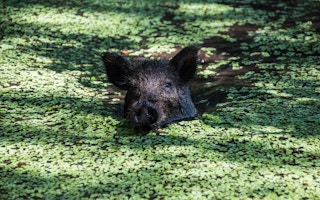Some 50,000 wild species provide for many of the world’s people, according to a recent report from the Intergovernmental Science-Policy Platform on Biodiversity and Ecosystem Services (IPBES). But today, those critical services are threatened by the global biodiversity crisis, the authors found in their review of more than 6,200 sources.
“The sustainable use of wild species matters for all people and in all communities,” Anne Larigauderie, an ecologist and the IPBES executive secretary, said during a press conference launching a report summary for policymakers on July 8. “Billions of people around the world rely on wild species for their food, for their energy, for their medicine, and many other purposes, including the very important cultural aspects as well.”
The aim of the report, scheduled for full publication later in 2022, is to move the use of wild species toward sustainability — that is, exploitation that will not endanger the future of these algae, animals, fungi and plants. Representatives from the nearly 140 member states of the IPBES, which is often described as the Intergovernmental Panel on Climate Change, or IPCC, for biodiversity, approved the report in early July.
Global wildlife trade secretariat CITES and other international groups focused on species conservation had requested this assessment as a tool for leaders and policymakers. It will also likely contribute to the new global biodiversity framework, slated for adoption at the UN biodiversity conference from Dec. 5-17 in Montreal, Elizabeth Maruma Mrema, who heads the Convention on Biological Diversity, said in a statement.
“
There is no single magic recipe in order to ensure sustainable use of wild species. We have really shown that the solution should be locally based and context-specific.
Jean-Marc Fromentin, marine ecologist, French Research Institute for Exploitation of the Sea
“In our world faced with biodiversity decline, including as a result of the overexploitation of wild species, we need to better understand the ways forward for sustainable use,“ Mrema said.
This latest assessment took four years to produce and follows the IPBES’s 2019 report concluding the threat of extinction looms over 1 million living species, as soon as the middle of the 21st century for some.
The harvest of wild species beyond sustainable levels is second overall only to habitat destruction in terms of the amount of biodiversity loss caused, according to the authors’ research. It’s the top cause for marine species. People rely on 10,000 wild species for food alone, with many more that meet a broader swath of our needs. Around a third of us, or 2.4 billion people, require fuelwood to cook, and a fifth of all humans depend on wild species for sustenance, income or both.
Wild species are essential in both industrialised and less-industrialised economies. Most wood and products come from wild species, a trend unlikely to change soon.
Still, rural communities could face the most significant risks, Jean-Marc Fromentin, a marine ecologist at the French Research Institute for Exploitation of the Sea (IFREMER) and one of the co-chairs of the assessment, said in a statement. With few other options, they may be forced to continue to harvest species already facing pressures from unsustainable takes, he said.
In addition to providing alternatives for survival and livelihoods, the assessment calls for involving these communities in managing and monitoring wild species. Marla R. Emery, a scientific adviser with the Norwegian Institute for Nature Research and a co-chair of the assessment, said the continued scientific study would be critical to reducing unsustainable use, but that other sources of information should also be included.
“There’s already a deep and important source of knowledge that we can use and draw on to do this,” Emery said during the press conference, “and this is Indigenous and local knowledge.”
The assessment notes that Indigenous peoples hunt, fish and gather wild species from land they manage, covering 38 million square kilometres (14.7 million square miles) — nearly four times the size of China — across 87 countries.
Emery also said collaboration with scientists must be done “with free, prior and informed consent of the Indigenous peoples who are participating in those collaborations about how their information is used.”
Recognition of the knowledge held in communities and Indigenous groups is critical to supporting the sustainable use of species. Several other “key elements” focus on allowing these groups to take part in decisions about species management, as well as calling for an equitable sharing of both the costs and benefits of the resulting actions.
The report also mentions the need for monitoring wild species and how they’re used. The authors call for policies, from internationally recognised targets to granular local plans, to work in step with each other.
The researchers also point out that each situation presents its own challenges, which should be taken into account.
“There is no single magic recipe in order … to ensure sustainable use of wild species,” Fromentin said. “We have really shown that the solution should be [locally] based and context-specific.”
This story was published with permission from Mongabay.com.

















